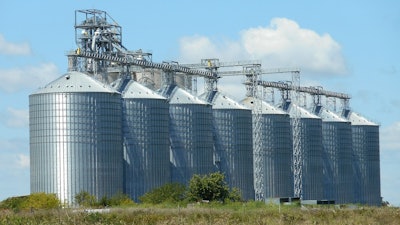
Low Mississippi River levels are eclipsing last year's record-setting numbers, and with a bumper crop being harvested, farmers are looking for a place to put their grain.
The latestUSDA Grain Transportation Reportnoted that on October 11, the Memphis, Tennessee, water-level gauge on the Mississippi River captured an official record low of −11.52 feet, surpassing the previous record low of −10.81 feet from October 2022. On October 17, the Memphis gauge read an unofficial record low of −11.98 feet that the U.S. Army Corps of Engineers has not yet verified.
Records were also broken on the Ohio River at Cairo, Illinois, where the water-level gauge read 4.5 feet, the lowest since 1901, and on the Missouri River at New Madrid, Missouri, where the reading was −6 feet. Draft and tow-size restrictions are in place along the entire Mississippi River system (MRS).
Despite some recent rain, however, more rain will be needed to raise water levels enough to improve navigation conditions. USDA said conditions are not expected to improve before late December or early January
Grain storage eases transportation disruptions
Low river levels havereduced and delayed barge trafficand increased transportation costs for farmers during peak harvest season. And despite a dry spring, farmers are harvesting what will likely be the country's third-largest corn crop ever,Reutersreports.
RFD TVnoted with the low river levels, farmers want to store more grain, but elevators are turning away loads of grain if producers are not under previous contracts until river levels come back up. One farmer in Missouri toldBrownfield Ag Newsthat a lot of grain bins that have not been used in quite some time are being filled this year.
A recent American Farm Bureau Federation (AFBF)Market Intelreported as of September 1, 2023, farmers and commercial grain facilities held 3.69 billion bushels of grain in storage -- a marginal 16-million bushel or 0.4%, decline from last year but down 25%, or 933 million bushels, from the prior five-year average.
On-farm grain stocks made up 39% of total grain stocks. Combining current grain stocks with expected fall harvested crops (corn, soybeans and sorghum) puts total grain supply at approximately 23.12 billion bushels.
- Comparing this to the total storage capacity of 25.4 billion bushels shows the U.S. has about 2.18 billion bushels of surplus grain storage space. Any supply dynamics that would cause stocks to breach this 25.4-billion-bushel threshold would exceed existing storage infrastructure.
After harvest,USDA predicts corn left in storageshould exceed the amount that has sat in U.S. silos for seven years. There could be 50% more corn in storage when the harvest starts in 2024 than when it started this year, the biggest single-year jump in supplies in nearly two decades.
What about rail?
Despite being recently reliable, rail transportation, too, holds uncertainty, noted theUSDA. In recent months, the strength of grain rail performance has partly reflected low grain carloads and low grain traffic overall, so the harvest demand poses a test of the system.
With rising grain demand, railroads have not shown significant capacity concerns. Still, some shippers are wary of a return to last year’spoor rail servicethat persisted through the fall harvest.
USDA noted that so far in 2023, rail grain carloads are down 12% from 2022. While still below average, grain carloads have increased in recent weeks. For the week ending October 7, the four U.S. Class I railroads (BNSF Railway, Union Pacific Railroad, CSX Transportation and Norfolk Southern Railway) originated 23,235 total grain carloads, the most weekly carloads since January.






















